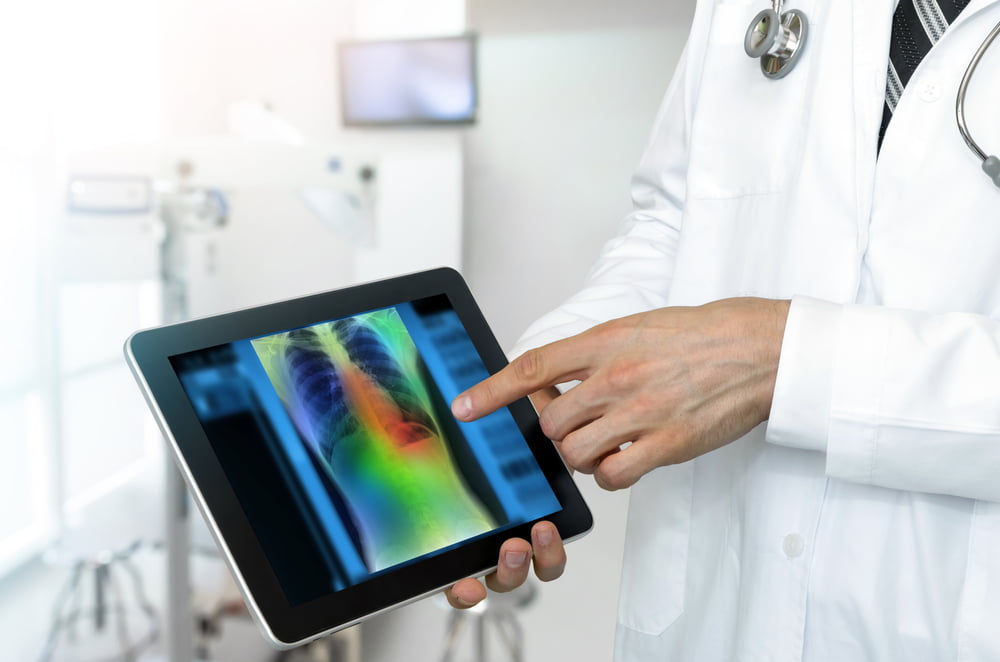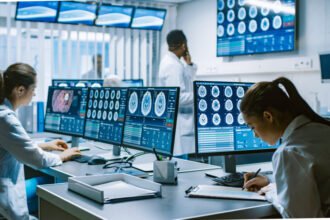Artificial intelligence (AI) and machine learning (ML) allow medical clinics, researchers and pharmaceutical companies to fine-tune their services to the needs of the patient. AI allow for complex procedures to be completed in the most efficient, low-risk manner possible. And ML helps medical platforms learn from each patient interaction and medical procedure.
To avoid confusion, it’s important to understand that AI is an umbrella term used to describe advanced computer applications – everything from self-driving cars to improving supply-chain efficiency. ML, on the other hand, refers to technology that learns, based on what it experiences. So, AI would help you drive your car, but ML would help you find the fastest route to work in the morning by proactively responding to real-time data collection and analysis.
In the medical space, we’re seeing AI increasingly help physicians offload their responsibilities to technology – allowing them to better focus on the needs of the patient. And ML is helping them discover new opportunities to provide better care.
1. AI Is Used to Research Cures to Complex Diseases
Innoplexus is just one example of a medical tech startup helping researches and physicians find cures to complex diseases. AI allows researchers to access every whitepaper, study and research document known to man – almost instantly.
And it goes a step beyond access. Physicians can input the type of disease they’re trying to treat. While the patient is sitting in the examination room, a physician can quickly pull up relevant information that highlights the best treatment plan for that disease. Instead of wading through a bunch of results, kind of like a Google search, Innoplexus’ database automatically curates information in a way that saves time.
The breadth of information available to physicians, thanks to AI, is far more comprehensive. Traditional medical research databases can take months or years to properly categorize and tag the information submitted to them. AI can access the digital versions of current reports the moment they’re published online.
This means that information physicians are reading is far more accurate and current than traditional database searches. And the really exciting part is that this technology can be customized, based on the specific use case of the subscriber. A medical analyst would interact differently with the platform than a neurosurgeon would. Specialized overlays help focus the information in a way that’s more relevant to the end-user. Then the real-time customization by AI takes things a step further during the query phase.
2. Medical Treatment Teams Can Deploy AI Platforms without Losing the Human Touch
The real challenge, as AI bleeds into the examination room, is the maintenance of high-quality patient-doctor interactions. We don’t want medical science to become a cold, technical system. Instead, patients need to feel confident that they’re receiving care from a human, guided by cutting-edge technology.
An example of AI producing better patient outcomes is the da Vinci system. It is a robotic system, with high-resolution 3D imaging that helps surgeons remove a cancerous prostate from a patient’s body. By utilizing the precision and improved visuals of the da Vinci system, patients are experiencing better outcomes with reduced recovery time and minimal chance of complications

But even as this robotic wonder does its magic, there’s a neurosurgeon that is leading the operation. A conscious patient doesn’t interact with the robot assistant. The face of the procedure is a flesh and blood surgical team that takes time to pre-qualify the patient and provide them with pertinent information.
The technology must always remain secondary to the human physicians providing high-quality care to the patient.
3. CT Scans Provide the Medical Data that Fuels AI Analysis and Treatment
Another exciting medical tech company worth mentioning is called Zebra-Med, and they’ve created a deep learning program called Zebra AI1. This powerful platform can read CT scans, as well as other body imaging to identify potential complications.
This is an important mission, considering that the current population of radiologists are already strained. And with the growth in the middle class, we are going to see a boom in demand for medical imaging analysis. AI can take the scans that physicians perform and read it more quickly. If issues are highlighted, a radiologist can prioritize pre-scanned images with issues identified.
The increased speed with which physicians can receive analysis will help provide a more compassionate form of care. Patients will not be left in limbo, wondering what is wrong with them. And early treatment is absolutely critical to fighting destructive diseases like cancer. Even with new treatments for breast cancer and other diseases, early detection is the biggest factor in successfully bringing a patient back from the brink.
Conclusion: AI Is a Powerful Tool, Not Something to be Afraid Of
Physicians shouldn’t hesitate in finding ways to bring AI into their medical practice. While images of Terminator coming to life might give you a momentary pause, the benefits far outweigh the risks. Experts do not envision a future in which doctors are replaced by machines. Instead, we’re on the cusp of a bright future with exciting advancements that allow physicians to provide even better care to their patients.









